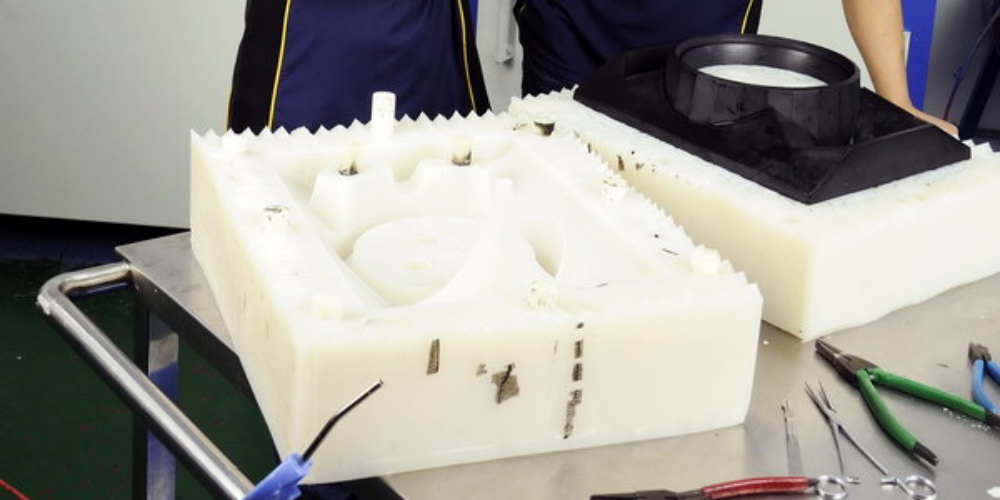Vacuum casting is a process that allows you to create silicon molds for metal alloys. This custom-made mold can be used for creating parts that require intricate detail, such as jewelry or medical equipment. The vacuum casting process can be done on a small scale using simple equipment that is easy to use, and it produces high-quality parts that are durable and attractive. Vacuum casting also makes it possible to make multiple copies of one design at once without wasting any material or creating waste products during the manufacturing process.
What is Vacuum casting?
Vacuum casting is a process that uses a mold and a vacuum chamber to create a cast. The mold is formed by pouring liquid resin into the mold. As the resin cures, it shrinks and creates an object with the shape of the mold. Once the object has been created, you remove it from the mold to get your final product.
Step-by-step process
First, you need to find a mold that can be used as the negative of your pattern.
Second, you need to create a pattern using tools such as laser cutters and 3D printers. You can also use other methods like paper cutting or woodworking machinery to make patterns in different shapes and sizes (depending on the type of vacuum casting machine you have).
Third, you need to create a negative of that pattern out of wax or plaster so it can later be removed from the mold when making its positive counterpart in resin or whatever material you plan on using for casting purposes!
Fourthly: Make sure everything is cleaned properly before pouring resin into any molds because it will not stick well if there's the residue left behind from previous attempts at making casts with other substances such as clay etcetera."
Rapid Prototyping
Rapid prototyping is the process of making a model of a design using a variety of materials. The prototype can be used to evaluate the design and make changes to it before moving on to final manufacturing. It can also be used to create models for testing and marketing purposes, or simply as art pieces they like.
When it comes to rapid prototyping in general, there are two broad categories: additive manufacturing (or 3D printing) and subtractive manufacturing (or traditional machining). Additive manufacturing uses an additive process where the material is added layer by layer until the desired shape is produced; subtractive methods generally remove material from an existing blank until your final part has been achieved.
Vacuum casting process
The process of vacuum casting is a widely used industrial manufacturing and prototyping method. Vacuum casting is a popular choice because it's inexpensive, fast, and easy to use—not to mention it can be applied to a variety of materials.
In this process, resin molds are formed by hand or with automated equipment. The resulting parts are then placed in a mold box with the desired metal powder mixed into it (this step is called "charging"). Once they're ready, they're placed inside an oven under high pressure where metal melts together with resin particles in order to create one solid piece of material (the metal becomes embedded within the plastic).
Once cooled down enough so that it doesn't melt anymore when heated up again later on during production runs (this step is called "annealing"), pieces are removed from their molds and cleaned off before being handled further by machine operators who will run tests such as hardness tests or bend tests before sending them off for final inspection by engineers who check quality control standards for accuracy measurements thereon
Vacuum casting rapid prototyping process
Vacuum casting is a process of creating a mold from a liquid, and then pouring the liquid into the mold to create a solid object. It's perfect for rapid prototyping because it's fast, inexpensive and flexible. The main benefits of vacuum casting are:
- The process can be used with almost any material.
- The process produces strong molds that last for years without losing their shape or detail.
- Vacuum-casted parts can be made in large batches when needed, so you won't have to spend time making small batches over and over again (unless you want to).
Conclusion
Vacuum casting is a process that uses plaster to create a mold of an object. It can then be used to cast plastic, rubber, or metal parts as needed. The mold can also be used for making copies of the original.
Vacuum casting systems use suction pumps to pull air out of the enclosed chamber in order to create a vacuum effect inside it. This creates pressure from outside which pushes liquid plaster into all nooks and crannies present in your mold design, thus forming an exact copy when cured.
In order words, vacuum casting helps you make prototypes quickly without having to wait too long before they're ready for use!


